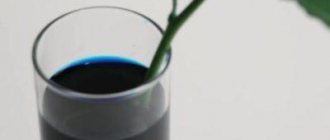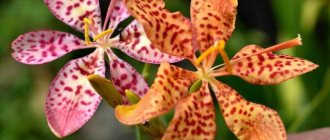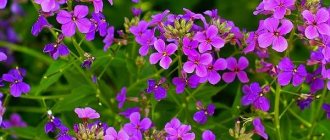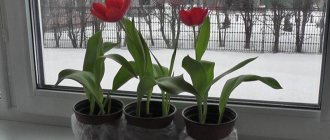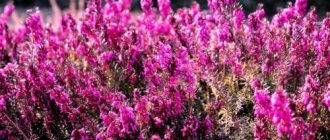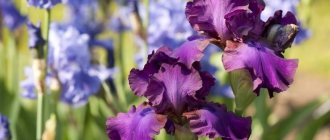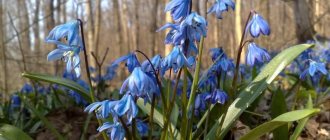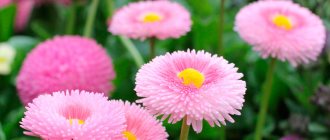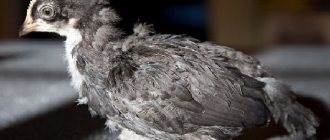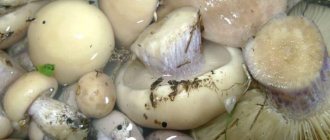Top 5 most popular blue perennial flowers
Ornamental plants for a site are selected taking into account numerous factors and criteria. It is necessary to take into account not only the color, but also the growing conditions, the size of the bush, and other features. Below are the most popular blue perennials with photos and names.
Mountain cornflower
A medium-sized herbaceous plant up to 60 cm high. Mountain cornflower (Centaurea montana) is unpretentious and adapts well to unfavorable conditions. During the flowering period it is covered with buds 6-8 cm in diameter.
Mountain cornflower blooms in June
The flowering period lasts 2-2.5 months. The plant emits a strong, pleasant aroma. Suitable for group and single plantings.
The strong odor emanating from the buds can attract harmful insects. Therefore, cornflowers and other representatives of the flora growing nearby need to be sprayed with an insecticide for preventive purposes.
Aconite glomerulosa
An elegant herbaceous plant, the average height of which is 80 cm. Aconite glomerular (Aconitum napellus) is covered with large paniculate inflorescences of blue color. Used for small group plantings.
Aconite blooms from early July to late September
The perennial is winter-hardy. It can grow in one place for up to 8 years.
Hyacinth
This is a genus of perennials, including a large number of species and varieties. Many are blue when flowering.
This color is typical for the following varieties:
- Delft Blue.
- Blue Jacket.
- Blue Pearl.
- Atlantic.
Hyacinth is demanding on growing conditions.
Almost all varieties are low-growing. Average height - up to 30 cm. Flowering is relatively short - up to 1 month.
Areas with loose, well-fertilized soil are recommended for planting. Regular watering and fertilizing is required. For the winter, young specimens should be covered to prevent freezing.
Delphinium
A perennial popular among domestic gardeners. Many varieties are blue when flowering.
Among them:
- New Millennium.
- Blue Bird.
- King Arthur.
- Black Night.
- Giant Blur.
Delphinium is planted in areas well lit by the sun.
The flower is sensitive to stagnation of fluid in the roots. It responds well to feeding. It is characterized by winter hardiness and low sensitivity to drought.
How to grow delphinium:
Saintpaulia
A low-growing plant, also called violet. Height – up to 20 cm. Many varieties have a blue color when flowering. Saintpaulia is compact and is usually used for planting in combination with other ornamental plants.
Important! When purchasing Saintpaulia, it is determined whether it is intended for planting in open ground. Many varieties can only be grown indoors.
Most types of violets are characterized by early flowering.
Saintpaulia tolerates division well. It blooms in the second year after planting in the ground.
Verbena
Lush, richly colored verbena inflorescences can decorate a cottage or balcony. For all its beauty, it is not capricious or demanding, and therefore will grow even with a novice gardener.
In mid-March, verbena is sown as seedlings, a month later they are plucked, and after another month they are pinched and planted in the ground. For the maximum number of flowers, the plant is fed before and during flowering with a mixture of nitrophoska and Agricola (1 tablespoon per 3 liters of water per 1 sq.m).
Tall blue perennial flowers
For many, the size of the bush is a decisive factor when choosing an ornamental plant. To decorate the area in monochrome colors you will need tall blue perennial garden flowers.
Lupine
Perennial varieties of this plant are rare. It is a subshrub up to 120 cm high with large dark blue and white-blue flowers, erect with a small number of leaves.
Read more Perennials that bloom all summer: photos with names
Lupine is resistant to low temperatures down to -30 degrees
Blue varieties bloom for up to 3 weeks. Subsequently, the brushes lose their decorative effect.
Hydrangea
The most popular blue variety is Nikko Blue. Hydrangeas “Early Blue” and “Bluebird” are no less in demand.
When planting in groups, hydrangea plants are placed at a distance of 1 m from each other.
Important! To give the crown a neat shape, hydrangea needs to be pruned 2-3 times a year.
Hybrid varieties may gradually lose the bright color of their flowers. To prevent this from happening, they must be regularly fertilized with mineral fertilizers.
Iris
Perennial with single, less often branched stems, and flat sword-shaped leaves. Flowers are solitary, less often in small inflorescences. Color – violet-blue.
Irises are unpretentious to the soil, but do not tolerate excess moisture.
It can grow in one place for up to 7 years. In the future, it is recommended to divide the bush.
Agapanthus
A light-loving plant recommended for planting in the southern regions. Agapanthus is sensitive to unfavorable climatic conditions.
Agapanthus blooms for up to 3 months
The average height is 70 cm. The flower tolerates short-term shading, loves moisture, and responds well to mineral fertilizing.
Gladiolus
A genus of perennials, including numerous species. A popular variety with blue flowers is Blue Mountain.
To bloom gladiolus buds, you need nutritious, well-warmed soil by the sun.
Depending on the timing and environmental conditions, purple-blue flowers appear on the gladiolus. Height reaches 120 cm.
Ground cover blue perennials
Such plants are not tall and usually have a large number of creeping or climbing shoots. Groundcovers also include dwarf erect flowering perennials with blue flowers.
morning glory
A low-growing, climbing plant. It is a liana-like perennial with small blue flowers.
Morning glory is used for vertical gardening
Important! The plant contains toxic substances. Therefore, it is planted in places inaccessible to children and animals.
Morning glory has a long flowering period. The perennial blooms in early June and fades with the arrival of the first frost.
Heliotrope
Creeping varieties are used as ground cover plants. The most common is the heliotrope “Marine”. Bush height – up to 35 cm.
Heliotropes can be planted in both sun and partial shade.
The decorative value of heliotrope is manifested not only during flowering. It has large, dense foliage that fades only in late autumn.
Lobelia
Herbaceous perennial with small blue flowers. Characterized by rapid growth. Cushion shape. With regular pruning, you can make the flower dome-shaped.
Lobelias require moisture and sunlight to bloom abundantly.
Height - up to 25 cm. Flowers are 1.5-2 cm in diameter. Lobelia is used to decorate borders, flower beds and flower beds. They are often planted in mixborders and rock gardens in front of tall ornamental plants.
Periwinkle
A low-growing perennial up to 15 cm high. Characterized by resistance to adverse factors. Tolerates cold winters well without affecting the intensity of flowering.
Important! Periwinkles are able to reproduce by self-sowing. If this is not necessary, the seed pods must be removed from the flower.
Periwinkle is ideal for shady areas.
The perennial is not picky about the composition of the soil. But if you plan to grow blue periwinkles for a long time, it is better to plant the flower in fertile soil.
Aubrietta
The Blue Cascade variety is used as a ground cover plant. It is a herbaceous perennial with abundant flowering. This species is classified as evergreen. The foliage retains color almost all year round and blooms in early spring.
The annual growth of aubrietta reaches 20 cm
The flower is exceptionally winter hardy. It forms a lush cover on the soil surface. Flowering lasts up to 8 weeks. The foliage remains green until mid-autumn.
Read more Low-growing perennial flowers that bloom all summer
Linen blue
This perennial has sky-blue flowers, thin but strong stems that grow up to 35 cm. The flower is five-petaled, 3 cm in diameter, the leaves are small.
A flower opens and blooms for only one day, but the next day it is replaced by hundreds of others. Within two months the bush will be covered with a soft blue cloud. Sunny places with soil that does not have stagnant water are suitable for this plant. It does not require special care; just water, remove faded flowers and prune in the fall. It requires moderate watering, can tolerate dry soil, and does not require shelter for the winter.
Blue flax looks beautiful in group plantings. It can be planted on a Moorish lawn or in a rock garden. For joint planting this plant is suitable: carnation grass, yellow sedum, white Carpathian bells.
Blue perennials blooming all summer
The disadvantage of most ornamental plants is that they bloom for a short period of time. To compensate for this disadvantage, you should pay attention to perennial blue flowers for the garden, blooming all summer.
Phloxes
A long flowering period is typical for creeping varieties. They are less sensitive to adverse conditions and tolerate the absence of light well. The height of the bushes reaches 50 cm.
Phlox grows well in all types of soil
The perennial is unpretentious and does not require constant care. Hybrid varieties exhibit resistance to diseases and pests.
Phlox care:
Bells
A low-growing perennial that blooms from late spring to late autumn. The blue buds are small, but there are a lot of them. The perennial grows well on any soil, including rocky ones.
Bluebells can reproduce by self-sowing
The perennial grows in one place for up to 6 years. In the future, dividing the bush and replanting is required.
eryngium
Herbaceous perennial with a specific shape of foliage and flowers. The stem is erect. Some varieties of blueheads reach 1.5 m in height.
The eryngium does not require any care other than periodic watering
The perennial is ideal for planting in poor soils. Eryngium does not respond well to mineral and organic fertilizers, which affects the quality of flowering.
Clematis
A liana-like plant growing up to 5 m in length. The perennial blooms from late May to early September.
Clematis blooms profusely when planted in sunny areas
Resistant to pests and diseases. However, the perennial is sensitive to cold. It is covered for the winter to prevent the roots from freezing.
Sage
Perennial with paniculate blue inflorescences. The height of the bushes is up to 120 cm. The stems are erect.
Sage prefers loamy soils fertilized with humus
Important! For regular flowering, it is necessary to monitor the acidity of the soil. It should be between 5.5-6.5 pH.
Otherwise, sage is unpretentious and does not cause difficulties during care. The perennial can be grown in one place for a long period of time without replanting.
Perennials with blue flowers
In landscape design, plants with different shades are often used. Typically, blue perennials for the garden are combined with pale blue flowers. There are a lot of varieties and varieties of such plants.
Browallia
Low-growing tubular perennial up to 30 cm high. During the flowering period it is covered with blue racemose inflorescences. They are formed by star-shaped flowers up to 5 cm in diameter.
Brovallia is grown in open ground only in the southern regions
Initially, the blue flower was intended only for planting indoors. Later, varieties were developed that could quickly adapt to open ground. Brovallia blooms from June to September.
Camassia
An unpretentious and versatile perennial, popular among landscape designers. The stems are erect - up to 80 cm. The peduncles in the upper part form panicles. The flowers are six-petaled, blue, with yellow stems.
Camassia is a bulbous plant that blooms in May-June
Blue perennial is planted in partial shade or sun. The flower is not picky about soil. Needs regular watering without stagnant waterlogging.
Bindweed
A popular blue variety is Royal Ensign. It is a perennial up to 30 cm high with beautiful flowers with a diameter of 5 cm.
Convolvulus requires a garter to grow vertically
The plant is planted in well-drained soil with any level of fertility. Planting in illuminated areas is recommended. It can be propagated by seeds using the seedling method.
Forget-me-nots
A small-growing perennial shrub, up to 40 cm high. Covered with small inflorescences-curls.
Read more Climbing perennials for the garden that bloom all summer: photos and names
Forget-me-nots bloom from early May to mid-June
The perennial can be planted both in the shade and in the sun. Forget-me-nots are used to decorate flower beds, flower beds and for group and single plantings.
Scylla
A bulbous perennial, also called blue snowdrop or scilla. Height - up to 15 cm. Characterized by early flowering, which occurs in early or mid-March.
The perennial scylla prefers acidic soils enriched with peat and humus.
Blue snowdrops are considered sensitive to lack of light. In cloudy weather they do not open. If the air temperature drops, the stems bend strongly.
Hydrangea
Sun-loving hydrangea decorates flower beds with variegated “caps” that surprise with a variety of shades from early spring until late autumn. She is not afraid even of the first snow.
The color of the inflorescences is significantly affected by the level of soil acidity. The more acidic the soil, the more shades of blue and blue are found in the palette. This occurs due to the high concentration of aluminum; usually the roots quickly absorb the oxide solution.
Ground cover flowers perennials blue
Creeping and climbing plants are no less decorative than erect ones. Groundcover perennials bloom blue, and at the same time green the area due to the large number of shoots and dense foliage.
Brunner
A low-growing ground cover plant with large racemose inflorescences. The height of the bush is up to 45 cm. The perennial grows up to 70 cm in width.
Brunnera blooms in April.
Important! Brunnera has large leaves that quickly evaporate moisture. In summer, the flower needs regular watering.
In landscape design, varieties with double-colored leaves are actively used. It is propagated by dividing the bush every 3-4 years.
Azarina
A liana-like climbing perennial designed for vertical gardening. Recommended for planting in the southern regions.
and the flowering period of azarina depends on the planting location and air humidity
Azarina is not picky about the soil, so it is often planted in rocky soil. The perennial is suitable for decorating terraces, balconies and verandas. Flowering continues from mid-spring until the first frost.
Primrose
It is in great demand among gardeners due to the variety of flowers and ease of care. The perennial is successfully grown in seedlings. In open ground, primrose is used as a low-growing ground cover plant.
The following varieties are characterized by blue flowering:
- Blue Champion.
- Blue Zebra.
- Blue Jeans.
- Blue Velvet.
Blue primrose bushes look best when planted compactly.
Caring for perennials involves regular watering, loosening the soil and mineral fertilizing. Every 4-5 years the primrose is transplanted to a new place.
Gentian
Perennial herbaceous shrub. Height varies depending on the variety and cultivar. Some gentians reach a height of 120 cm. Low-growing varieties are used as ground cover. Chinese gentian (Gentiana Chinese) is best suited for these purposes.
Blue gentian is grown from seeds
It is highly branched, with numerous blue flowers. Under natural conditions, the perennial grows on rocky soils high in the mountains. This explains the resistance to low temperatures and winds.
Creeping tenacious
Herbaceous ground cover perennial. Height – up to 60 cm. Erect bush. At the bottom there are large oval leaves. The top one has long peduncles with numerous small buds.
The survivor remains decorative until late autumn
Blue perennial is not picky about soil and growing conditions. In landscape design, tenacious plants are planted in rock gardens and mixborders. As a ground cover shrub it is used only in single plantings.
Delicate lobelia
This plant, which has soft blue flowers, can be planted not only in a flower bed , but also in hanging baskets, balcony boxes, and flower pots.
Blooming lobelia resembles a blue ball. This flower looks good in a group, for example, with petunia, or in a separate planting. Lobelia belongs to the bellflower family. Depending on the variety, lobelia can be:
- Bush - forms a dense, low, profusely flowering ball in which no leaves are visible.
- Ampelous - this species is more difficult to care for, flowering is not so abundant.
Growing lobelia is a rather labor-intensive process.
When sowing seeds for seedlings, it will take about 2 months before the first flowers appear, so you can sow the seeds as early as February. But due to the short daylight hours in this winter month, you need to think about additional lighting, otherwise the plant will slow down in growth. However, if you sow lobelia in March or April, most likely it will “catch up” with the plants planted earlier. After planting lobelia in a permanent place, it requires regular watering because it does not tolerate drought. Its delicate leaves and flowers are contraindicated in the scorching sun: they wither and dry out. When growing a flower in a pot, a layer of drainage is necessary; it will avoid stagnation of water, which is detrimental to lobelia. Fertile soil rich in nitrogen mineral fertilizers is not suitable for it. You can apply fertilizers containing potassium sulfate.
In mid-July, when the formation of new flowers stops, the bush should be trimmed, leaving 5-10 cm, after which the lobelia will bloom again.

